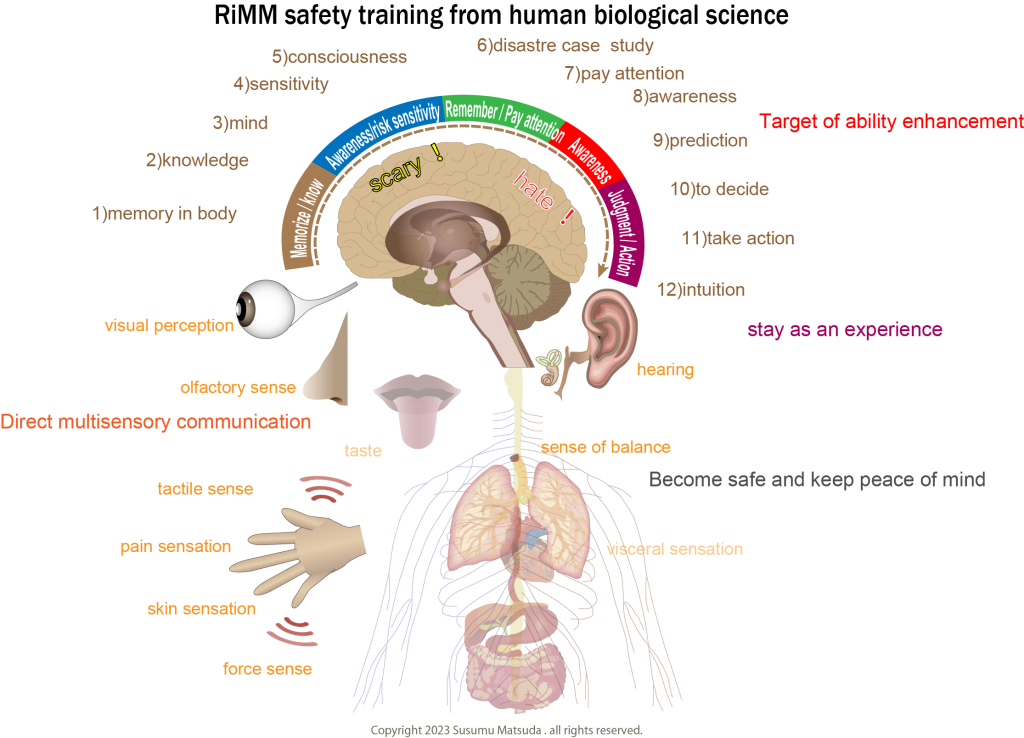Our safety efforts began in 2001. We aim to develop safety methods using VR and robot control technology. In 2005, at the request of a research institution, we developed technology to visualize and communicate child accidents and prevent disasters from occurring. In 2007, in response to a railway disaster, we will develop a training simulator for disaster response related to railway operation. In 2013, we will develop a training simulator to protect nuclear power plants from terrorism. In 2014, we will develop a training simulator for training disaster prevention personnel to respond to natural disasters. In 2015, we will develop a simulator for training nuclear power plant decommissioning work. At the same time, we will develop a portable VR experience hardware kit. In 2016, we will commercialize a disaster experience simulator to prevent industrial accidents. We will develop and commercialize a device that generates physical sensations (touch, pain, balance) as a means of sensing danger. In order to prevent disasters from becoming someone else’s problem, we realized the need to simulate many disasters that could occur in our daily lives and began developing scenarios. To date, more than 200 types of experiential disaster content in 34 occupations have been commercialized. The simulated disasters include natural disasters, general disasters (traffic, fire, etc.), and content that corresponds to industrial accidents is currently being expanded. A training simulator that allows you to learn tasks physically and reduce work errors. A disaster reenactment video that shows the causes that lead to a disaster and also studies disaster cases. A disaster experience that cultivates danger sensitivity and changes awareness through experience. We are commercializing a training simulator that conveys the situation at the time of a disaster using VR and promotes people’s judgment and actions in the event of a disaster. These are concrete safety methods to protect the human body.

From 2020 onwards, we will begin research with the aim of deriving peace of mind. In order to understand peace of mind, we are conducting research and research focusing on the tactile organs related to human emotions, psychology, neurology, and brain chemistry. In particular, I am focusing on negative emotions during disasters and researching the mechanisms by which human emotions and consciousness are generated. We are collaborating with medical research institutions in consideration of the psychological impact of negative emotions. In order to change consciousness and promote awareness, it seems that body and brain memory, environmental perception, and image comprehension are involved in creating risk sensitivity. To feel safe, it is necessary to unravel the 12 processes from physical memory to intuition as shown in the diagram. It is necessary to be aware of disasters and develop the ability to predict and prevent them, as well as the ability to notice. To understand peace of mind, it is important to learn about human biological characteristics.